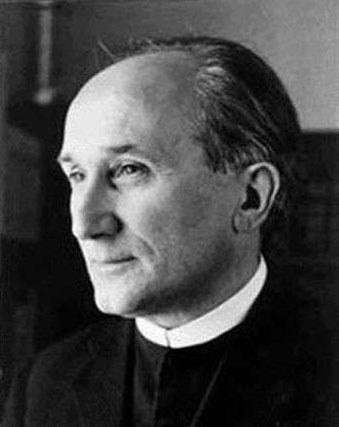For the 50th anniversary of Guardini’s death
The eponymous professor position will become part of the Institute of Catholic Theology which is to be founded.

Romano Guardini managed to build bridges
between the modern living environment
and religious symbolism, between faith
and a scientific world view and between
art and an intellectual view of reality.
Photo: Guardini Stiftung e.V.
On October, 1th 2018 was the 50th anniversary of the death of theologian and religious philosopher Romano Guardini, who taught at the Friedrich Wilhelm University, nowHumboldt-Universität, from 1923 to 1939. The Verona-born priest was one of the most important Catholic intellectuals of the 20th century. He was a pioneering source of inspiration in the liturgical movement, was one of the leading personalities in the Catholic youth movement and distinguished himself as a particularly popular academic teacher.
Through his work, Guardini managed to build bridges between the modern living environment and religious symbolism, between faith and a scientific world view and between art and an intellectual view of reality. His work stands for a philosophical world view that cannot be dismissed ideologically as he always tried to include various different perspectives in his considerations. In this sense, for him philosophy was not merely technical knowledge but rather a search for a purpose that made the world understandable and habitable. For him, the source and outcome of this search was Christian belief, but not in the dogmatic or even apodictic sense but instead in logic that was strict but also enabled dialogue. Against this background he interpreted authors such as Dante, Hölderlin, Dostoyevsky and Rilke and developed a Christian world view that garnered attention and recognition even outside of Berlin and which continues to inspire Catholic believers to this day.
A bridge between theology and philosophy
Guardini was dismissed from teaching by the Nazis The versatility of his thinking was reflected in his academic career: he helped provide intellectual and religious shape to academic life in Berlin from 1923 until he was banned from teaching by the National Socialists in 1939 with his lectures entitled “Religious Philosophy and the Catholic World View”. Both in the texts he wrote at that time, including “The Saviour” (1935) and “The Lord. Considerations of the Person and Life of Jesus Christ” (1937) and in his lectures and seminars, Guardini took a critical position with regard to the ideology put forward by the National Socialist German Christians, which ultimately led to him being dismissed from his post. Nevertheless, Guardini’s work continued to echo to a considerable extent beyond the limits of an academic environment even at that time. Shortly after the war, in 1948, he was appointed to a teaching position in Munich that was created for him. The honours he received includes the Peace Prize of the German Book Trade in 1952 and the Erasmus Prize in Brussels in 1962.
Thanks to generous sponsorship, the Guardini Foundation was able to set up a teaching position as part of a contract with Humboldt-Universität in 2004 to continue the tradition of Guardinian thinking. This was well received by the students, who awarded the Theology Faculty teaching prize to the position in the 2017 summer semester. The current post holder, Ugo Perone, came from the school of the Turin-based hermeneutics specialist Luigi Pareyson and combines philosophical and theological aspects against the background of current issues in his thinking. The professor position includes an assistant position specialising in Jewish philosophy.
From the 2019/2020 winter semester, the Guardini professor position will start a new academic era as part of the planned Institute of Catholic Theology in which the ecumenical and inter-religious role it is obliged to fulfil will be continued: a bridge between theology and philosophy and between Catholicism, Protestantism and Judaism. Looking to the future we can hope that work will continue successfully in this new framework and that the legacy of its namesake will live on.
Author: Dr. Silvia Richter
